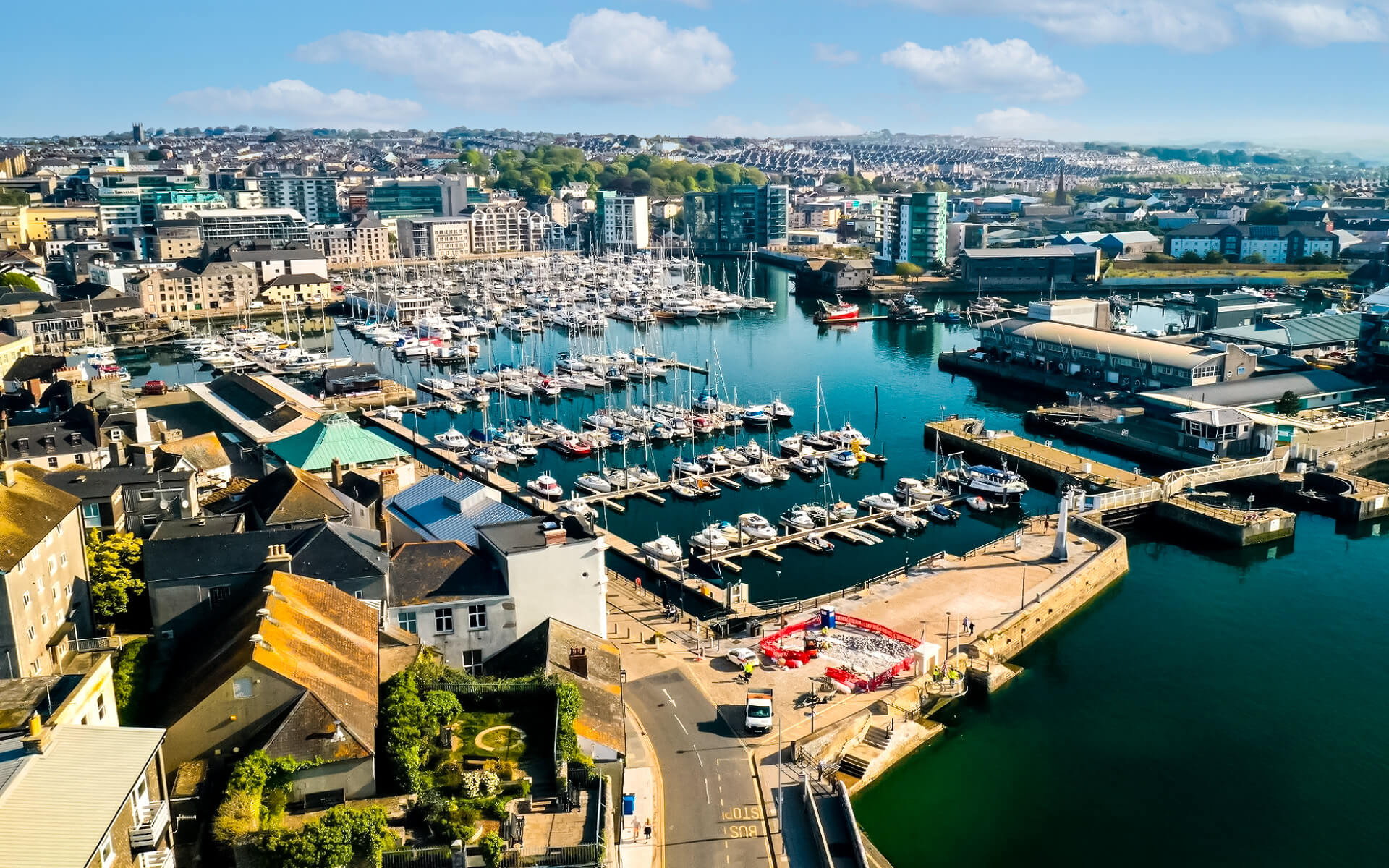Plymouth is a city on the south coast of Devon, England, some 37 miles (60 km) south-west of Exeter and 190 miles (310 km) west-southwest of London, between the mouths of the rivers Plym to the east and Tamar to the west, which unite to create the border with Cornwall.
Plymouth’s history dates back to the Bronze Age, when a town initially appeared on Mount Batten. This hamlet remained a Roman Empire trade center until it was eclipsed by the more lucrative community of Sutton, today known as Plymouth. The Pilgrim Fathers left Plymouth for the New World in 1620, establishing Plymouth Colony, the second English colony in what is now the United States of America. The town was captured by the Parliamentarians during the English Civil War and was besieged from 1642 and 1646.
Throughout the Industrial Revolution, Plymouth expanded as a commercial maritime port, processing imports and passengers from the Americas as well as exporting local resources (tin, copper, lime, china clay, and arsenic), while Devonport became a major Royal Naval shipbuilding and dockyard town. In 1914, three neighboring separate towns, namely the county boroughs of Plymouth and Devonport, and the urban district of East Stonehouse, were united to create a single County Borough. The merged town was renamed Plymouth, and it was granted city status in 1928. Due to the city’s naval significance, it was subsequently targeted and partially destroyed during World War II, an incident known as the Plymouth Blitz. Following the war, the city center was substantially restored, and continued growth resulted in the annexation of Plympton and Plymstock, as well as other surrounding suburbs, in 1967.
The city has a population of 261,546 people (mid-2014 estimate), making it the 30th most populated built-up area in the United Kingdom and the second-largest city in the South West after Bristol. Plymouth City Council governs it locally, and three MPs represent it nationally. Plymouth’s economy is still heavily impacted by shipbuilding and shipping, with ferry connections to Brittany (Roscoff and St Malo) and Spain (Santander), although it has shifted toward a service-based economy since the 1990s. It is home to Plymouth University and contains the biggest active naval facility in Western Europe — HMNB Devonport.


